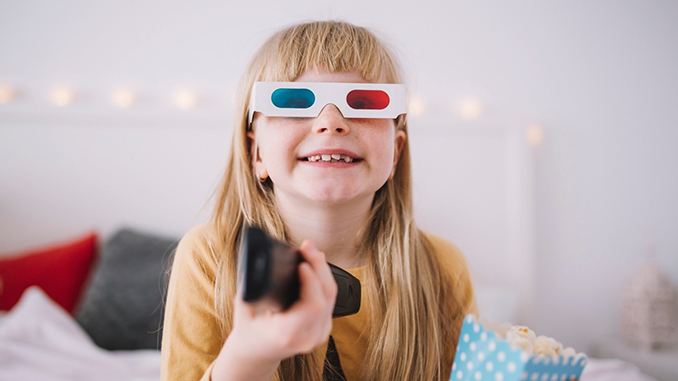
Learn about the potential for 3D vision problems in children
Published: July 11, 2020
By: Arron Barriga
3D images are sharper, clearer, and have an added dimension that makes them appear closer than they would in real life. By viewing 3D images, the normal function of your eye changes. To view a normal image, your eyes work in tandem with different muscles designed to help the eye move and bring the image to focus.
While viewing 3D imagery, these muscles move separately. This eye movement can cause strain to the eyes and bring fatigue. It can also lead to dizziness and nausea. The symptoms can feel similar to motion sickness.
If you’re concerned about your child’s 3D vision problems, it is necessary to limit their use of gadgets and other digital devices.
What Are the Common Side Effects of 3D Films on Vision?
- Eye Strain – 3D movies require eyes to converge in front, it may lead to eyestrain or headaches for some viewers.
- Headaches – Eyestrain leads to brain strain as well and this causes headaches.
- Blurred vision – This is a symptom of eye strain. It is likely to occur after long hours of watching 3D movies.
What Are the Treatments and Solutions?
- Ask your child to take breaks from 3D technology. Lift the glasses off their heads once in a while so that their eyes get a break. Tell your child to rest their eyes by closing them or blinking them for short intervals of time.
- Let 3D movies and games be a treat for your little ones. Make sure they aren’t viewing them regularly.
- Educate your children about the risks of 3D imagery. Be honest with them about the overuse of this technology and the impacts it has on eye health.
- Keep your TV screen or computer screen at a healthy distance to avoid headaches and eye strain. This will allow their eyes to relax.
- Adjust brightness and contrast controls on the TV or computer screen and turn off any bright light sources that could create a glare.
- See a doctor if needed. Set an appointment with an eye doctor and ask about binocular vision therapy. This therapy is designed to help your child learn how to coordinate eyes better to result in less discomfort during 3D viewings.
Remember, the younger the child, the less developed their eyes will be. It is important their consumption of 3D imagery is monitored so that they don’t develop eye health problems. You can consult your ophthalmologist or optometrist for more advice on how to care for your child’s eyes if they enjoy watching 3D movies.
